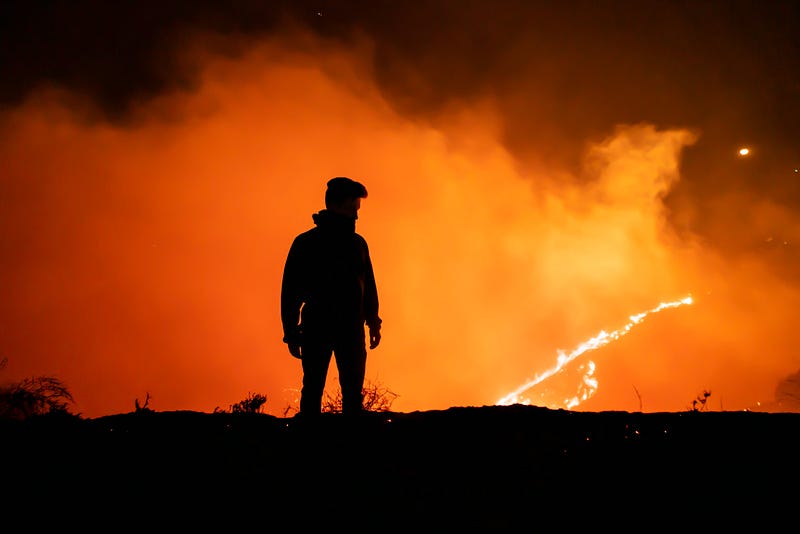Copycat Arson: Accelerating the damage of the California wildfires?
By Lauren Voso, Biology, 2023

Coverage on the California wildfires have become a constant in the news. As climate change seems to worsen the likelihood and extremity of wildfires, there has been a corresponding increase in the coverage of wildfire events. From the brutal burning of Paradise to the destruction of parts of natural parks like Yosemite, the public is able to witness in real-time the complete tragedies caused by these wildfire events. The evolution of instant media coverage has its benefits; viewers are able to be educated on these wildfires and are encouraged to help support those affected by them. But an unintended effect of this large-scale media coverage of wildfires has yet to be thoroughly investigated. Is it possible that media coverage might be inspiring individuals to commit “copycat arson”?
Is it possible that media coverage might be inspiring individuals to commit “copycat arson”?
Take Freddie Owen Graham. A resident of Missouri, Graham flew to California this September and drove down Calaveras Road in Santa Clara County with a rental car, setting fires as he went. His fires ended up burning 128 acres of land.
Graham isn’t the only one with an urge to intentionally start wildfires. Last year, Forrest Gordon Clark was charged with setting fire to Cleveland National Forest, a fire that resulted in burning of over 10,000 acres and 20,000 evacuations. Several others have committed similar crimes, resulting in widespread destruction and disaster for those affected. In fact, despite an overall decline in arson in California since 1985, in the past three years, the number of reported arsons has been on the rise. While it’s not certain this increase is associated with the large media coverage of wildfires, it is suspected that many of the arrested arsonists are inspired by what they see on the news.
Despite an overall decline in arson in California since 1985, in the past three years, the number of reported arsons has been on the rise.
Mental health is also an important factor to consider when looking at those who are intentionally setting wildfires. Psychologists from University of California, San Francisco have linked several mental health issues with arson, including schizophrenia and depression. Studies have shown that those who set intentional fires are generally more socially isolated than other violent offenders. Arson is also associated with substance abuse, often in connection with other mental health issues. For more extreme cases, individuals may be diagnosed with pyromania, in which the person has an impulsive obsession to start fires.
The idea of a copycat crime is an interesting phenomenon, which may be at play here with the arsonists in California. Usually, we associate copycat crimes with copycat killers: those who are inspired by a serial killer in the news and decide to kill others in a similar way. Copycat crimes are also often inspired by other forms of media, like crimes seen in films or on TV. Experts on copycat crimes claim that if a particular crime comes in waves, it is often caused by a cycle of imitation. It is also believed that if a type of crime gets excessive media attention, the risk of imitation increases. This excessive media coverage can inspire “edge-sitters,” people in between normal and criminal behavior, to take action corresponding with their criminal side. Because of the widespread news coverage of wildfires, it’s likely that a cycle of copycat arson has been evoked.
Human causes of wildfires, whether they be intentional or accidental, need to be eliminated as the west coast faces increased damage from these unnatural wildfires.
Human causes of wildfires, whether they be intentional or accidental, need to be eliminated as the west coast faces increased damage from these unnatural wildfires. The instant media coverage may be accelerating these crimes, as images of wildfire destruction are so accessible to the public and may inspire individuals to recreate the scenes they view so vividly. Although it may be hard to change the format of today’s media, we should be more aware of the impact of our news reporting and how it may be provoking those on the edge of crime to take action.
ISSN: 1093–6793